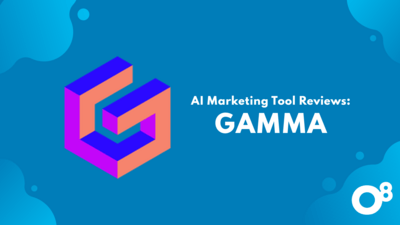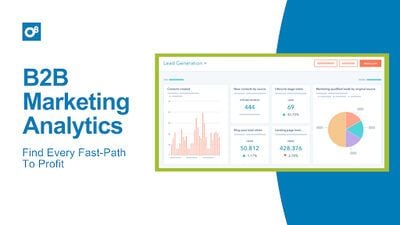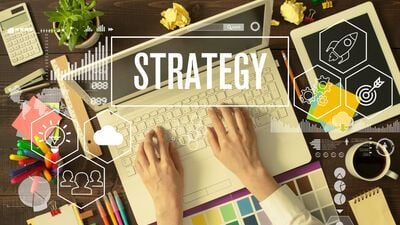Modern B2B Lead Generation Strategies to Increase Demand and Pipeline
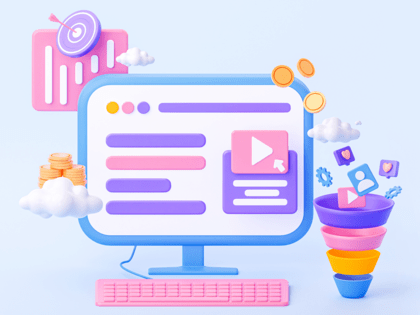
- Summary
- The Problem: Ineffective B2B Lead Generation
- Sharpening the Focus: The Power of Precision
- The Challenge of the Middle: Bridging the Pipeline Gap
- The Solution: A Holistic B2B Lead Generation Strategy
- The Changing B2B Buyer Journey: Why a Holistic LeadGen Strategy Is More Important Than Ever
- Comprehensive Review of Current Lead Generation Efforts in B2B Marketing
- The Role of Account-Based Marketing in Lead Generation
- Optimizing Content and Social Media Strategy for B2B Lead Generation
- Integrating Sales and Marketing Efforts for Holistic B2B Lead Generation
- Adapting to New Realities: Resilience and Innovation
- What’s Next in B2B Lead Generation?
For more than two decades, I've been helping companies grow their sales pipeline. Each engagement has offered unique insights into the changing dynamics of B2B marketing, sales, and the buying journey.
That said, it’s no secret the modern landscape pushed by economic pressures, rapid technological advancements, and everchanging consumer preferences is real. However, the core principles of an effective B2B demand generation strategy remain the same.
For many B2B companies, lead generation remains a significant hurdle. Despite numerous attempts at creating effective marketing campaigns, the conversion of website visitors into qualified leads often falls short of expectations. The pressure to not only attract but also convert these potential customers into paying ones is immense, impacting the overall success and growth trajectory of your business.
B2B Lead Generation Challenges
The Problem: Ineffective B2B Lead Generation
Before diving into solutions, it’s crucial to understand the typical challenges that hinder modern B2B lead generation success:
- Difficulty Capturing High-Quality Leads: Many businesses struggle to attract the right kind of leads that match their ideal customer profile, often due to ineffective targeting and poorly optimized landing pages.
- Inconsistent Engagement Across Channels: Utilizing platforms like LinkedIn and other social media effectively remains a daunting task. Businesses find it challenging to maintain consistent and meaningful interactions that could lead to genuine interest.
- Low Conversion Rates on Lead Generation Tactics: Despite efforts in various marketing strategies such as email marketing and content marketing, many companies see disappointing conversion results, questioning the effectiveness of their approaches.
- Inadequate Follow-Up Processes: Once potential leads are in the system, the failure to properly nurture them through the sales funnel often leads to lost opportunities, as sales teams and CRM systems are not fully aligned.
- Underutilization of Data and Analytics: A lack of comprehensive analysis on marketing campaigns, from A/B testing to lead scoring, prevents businesses from optimizing their strategies and improving lead quality.
Refining lead generation processes is crucial for sustaining business growth, particularly in the B2B sector where the sales cycle is typically longer and more complex compared to B2C. Effective lead generation not only fuels the sales pipeline but also enhances the quality of leads, ensuring that marketing and sales efforts are aligned and more likely to result in conversions and revenue growth.
Sharpening the Focus: The Power of Precision
No one likes waste. Every marketing team would prefer to deliver quality over quantity in the form of highly qualified leads. And sales teams don't have time to burn on B2B companies that aren't a good fit or are unlikely to close.
If there is one thing to be learned from account-based marketing, it’s that a deep focus and appreciation for precision can make or break your strategy, especially as the key to defining the Ideal Customer Profiles (ICP) and Sales Addressable Markets (SAM).
It might sound like table stakes, but I'm still amazed at the number of B2B companies that don't take the time to externally vet their ICP assumptions and develop their messaging accordingly. This focus is critical to efficient operations because ICP informs SAM.
Your SAM amounts to the universe of accounts you currently have in your system of record that match your defined ICP. These are potential customers within your target audience you can go after immediately, knowing you won't be wasting precious resources trying to qualify. It's key for efficiency and the impact of demand gen efforts. Many in B2B marketing are turning to intent data and solutions from companies like 6Sense (a new O8 partner). These solutions have the potential to help you shrink an ocean of target accounts down to a manageable pond and get them into your sales funnel.
Our work with data-driven solutions boosts our ability to target precisely. This ensures every marketing strategy is both effective and efficient.
The Challenge of the Middle: Bridging the Pipeline Gap
My experience suggests that most CMOs and demand generation leaders would agree that driving MQLs isn't difficult if you have a high-quality, well-differentiated solution and a great content strategy targeted at your decision-makers. Most would also agree that once a real qualification event happens and the handoff to sales takes place, they can trust that the Account Executive will do everything in their power to close that new opportunity.
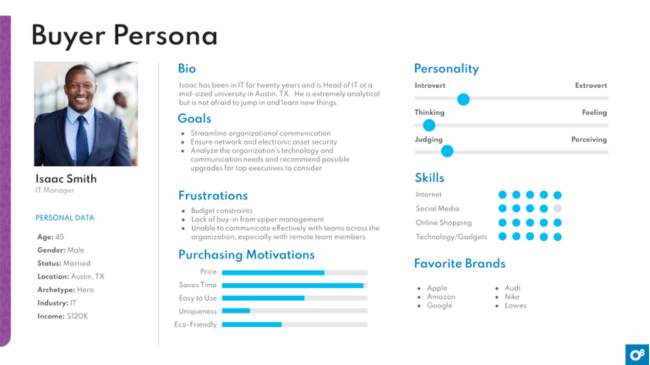
The real challenge lies in the middle of the process: The operational planning and resources needed to move the right personas from ICP-vetted accounts from the point of initial engagement to a true qualifying event is extremely difficult. It requires consistency, good storytelling, and appealing CTAs that motivate busy leaders to open up their calendars. Integrated and targeted messaging across email campaigns, social media, websites, and landing pages is critical. This is where strategies for ABM (both 1:1 and 1:Few), nurturing, sales enablement, and partner enablement intersect. Well-executed, well-integrated nurture programs that involve marketing and sales ultimately motivate potential customers to book that crucial meeting or demo.
Make no mistake: optimizing this phase of the B2B demand generation cycle with today’s smaller go-to-market teams is incredibly hard. This middle phase requires deep subject matter expertise, content that can speak to all phases of the buyer journey, the ability to deliver that content through the communications channels modern B2B buyers use and trust, and RevOps muscle to do the data analysis and reporting. It also requires a solid tech stack - CRM and Marketing Automation to start - and the talent to manage those tools on an almost full-time basis.
I see this challenge over and over as I talk to marketing and sales teams. Even though their solutions are often radically different, most companies have a backlog of unworked leads, MQLs stuck in the process, and “no decision” opportunities from recent years - potential customers - that are receiving little to no attention. These leaders recognize this. It’s not a failure of vision at all. It’s about bridging the gap between recognition of the challenge and the implementation of a reasonable and sustainable demand-gen solution.
This phase requires a mix of three things. They are compelling content marketing plans, targeted & integrated engagement and outreach plans, and sales teams that have been properly trained on 1:1 outbound best practices. At O8, our success in the development of integrated outbound strategies - ABM, nurturing, sales enablement - is underpinned by our expertise in B2B digital marketing, which makes for a holistic approach to lead generation.
Get The Ultimate Guide to B2B Lead Generation — Free!
B2B Lead Generation: There's a Better Way
The Solution: A Holistic B2B Lead Generation Strategy
A holistic lead generation strategy aligns both internal teams and external tactics, which is essential for enhancing B2B lead generation efforts and comes with several crucial benefits:
- Alignment of Goals and Strategies
When internal teams collaborate effectively, there is a clear alignment of goals and strategies across the organization. This ensures that everyone is working towards the same objectives with a unified approach, eliminating conflicting actions or contradictory messages that can confuse potential customers or dilute the effectiveness of campaigns. Alignment helps optimize the lead generation process as efforts are pooled to attract and nurture the right prospects with strategies that are known to work, which in turn increases the likelihood of successful conversions. - Comprehensive Customer Insights
Collaborative teams can pool their diverse insights about customers, creating a richer, more comprehensive understanding of buyer personas, customer needs, and behavior patterns. Marketing can use detailed feedback from sales about customer reactions to different selling points, while service teams can provide information on common pain points and post-purchase satisfaction. This enriched understanding allows for the creation of highly targeted and personalized marketing strategies that are more likely to resonate with potential customers, thus improving lead quality and conversion rates. - Consistent and Optimized Customer Journey
A cohesive collaboration ensures a consistent customer journey from the first point of contact through to post-sale interactions and beyond. When sales, marketing, and service share information and coordinate their interactions with customers, each touchpoint along the customer’s journey is optimized to build trust and move the customer closer to a purchase decision. This seamless experience is critical in maintaining customer engagement and can significantly boost lead conversion rates. - Efficient Use of Resources
Collaboration helps in maximizing the efficiency of resources used in lead generation efforts. For example, marketing can generate high-quality leads that are more likely to close based on targeted campaigns developed from sales insights, reducing wasted efforts on unqualified leads. Sales teams can then focus their energies on nurturing and converting these well-vetted leads rather than sifting through poor fits. Similarly, service insights into customer challenges and feedback can help tailor both marketing campaigns and sales approaches, ensuring that resources are not just saved, but also more effectively utilized. - Faster Response to Market Changes
Teams that communicate and work together can more quickly adapt to changes in the market or shifts in customer preferences. This agility is crucial in maintaining a competitive edge in dynamic markets. Rapid adaptation can be facilitated by immediate feedback loops where, for instance, sales and service provide real-time insights to marketing about what customers are currently responding to, allowing for swift changes in marketing strategies or sales tactics. - Enhanced Innovation and Creativity
Collaborative environments also foster a culture of innovation and creativity. When teams from different backgrounds and with different skill sets come together, they can brainstorm and solve problems in ways that a single team might not consider. This can lead to innovative lead generation strategies that set a company apart from its competitors and resonate more effectively with potential customers. - Improved Data Collection and Analysis
Working together allows these teams to integrate their data collection and analysis efforts. This integrated data approach provides a holistic view of what drives leads through the funnel and what tactics convert them into customers. With comprehensive data at their disposal, teams can fine-tune their approaches in real-time, enhancing the effectiveness of their lead generation efforts.
In essence, when sales, marketing, and service teams collaborate effectively, it not only improves the efficiency and effectiveness of lead generation processes but also enhances overall business performance by delivering a unified front that is agile, customer-focused, and better equipped to meet market demands.
Before we delve into specific strategies, let's understand why a holistic strategy is important.
The Changing B2B Buyer Journey: Why a Holistic LeadGen Strategy Is More Important Than Ever
The rise of big data, digital channels, and heightened customer expectations have radically transformed the modern B2B buyer journey. Larger buying teams have also impacted the B2B buyer journey. Company stakeholders recognize that advocating for the right software or consulting purchase can add tremendous value to an organization and thus their own career paths. Conversely, the wrong product or solution can lead to loss of revenue and profit, and for the one responsible for the contract, the loss of a job.
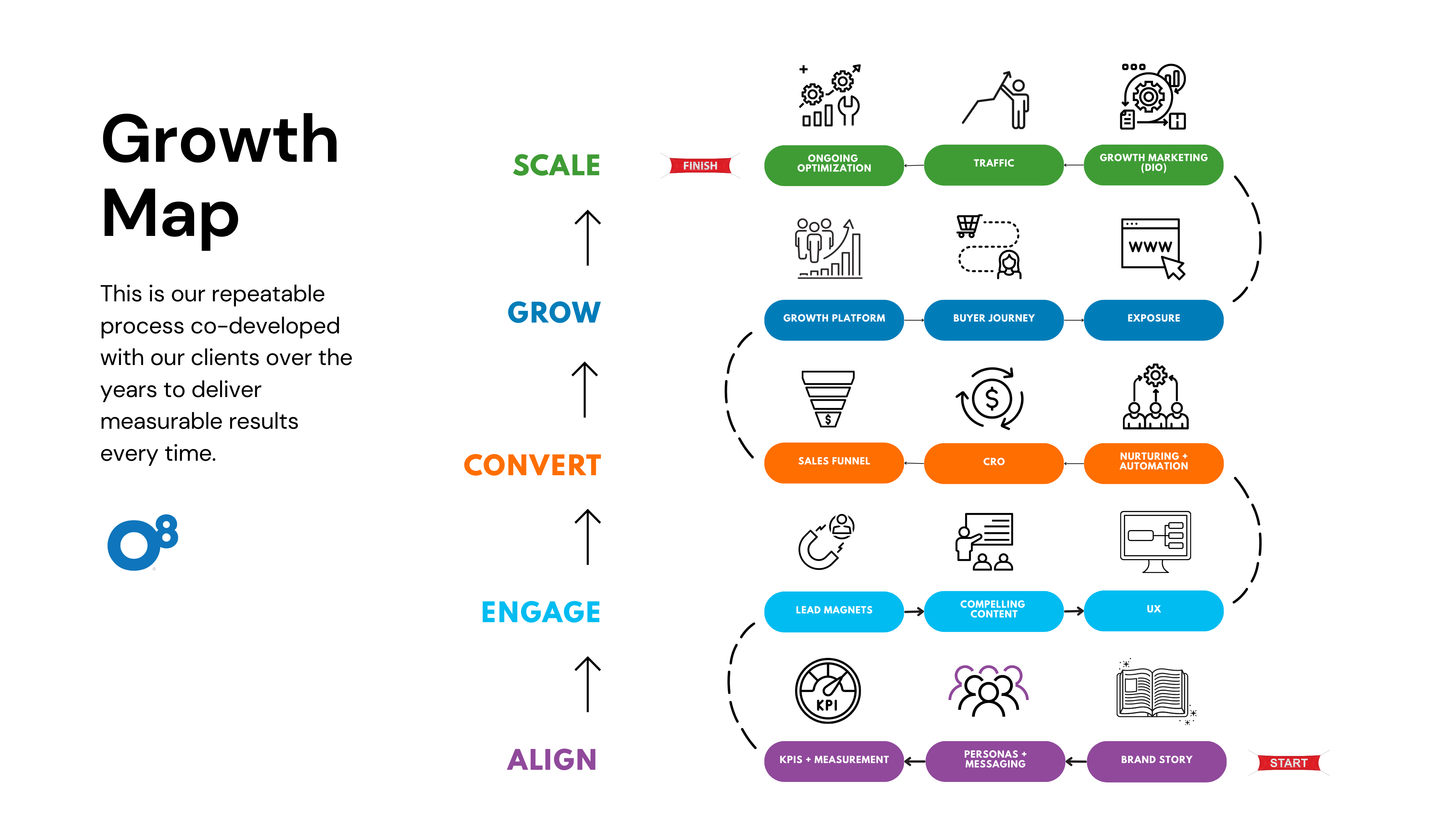
The B2B buyer journey has evolved significantly, becoming more complex and multi-faceted. This transformation demands a holistic lead generation strategy that can adapt to these changes and efficiently address the diversified paths potential customers might take. Here's how the changing nature of the B2B buyer journey aligns with and benefits from a holistic approach to lead generation:
1. Increased Research and Self-Education
Today's B2B buyers are more informed and independent, often conducting extensive research before ever contacting a sales team. They utilize a range of digital resources—from search engines, social media platforms, and forums to white papers and webinars—to gather information. This behavior emphasizes the need for a holistic strategy that integrates content marketing, SEO, and valuable content across multiple formats and platforms. High-quality content on LinkedIn, industry-specific blogs, and gated content like case studies or eBooks are essential to engage these self-directed learners early in their journey.
2. Multi-Channel Engagement
B2B buyers no longer interact with brands through a single channel. They expect consistent and personalized experiences across all touchpoints, including email marketing, social media, and even direct outreach like cold calling or email. A holistic lead generation strategy leverages CRM tools to unify these interactions, ensuring that marketing teams can deliver coherent and relevant messages that resonate with the target audience and nurture potential leads through their preferred channels.
3. Decision-Making Committees
The decision-making process in B2B transactions often involves multiple stakeholders, each with their unique pain points and criteria. Holistic lead generation strategies benefit from personas and targeted campaigns that address the specific needs of different decision-makers within a company. Tailored email campaigns, AB testing of landing pages, and personalized CTAs ensure that communications are relevant to each member of the decision-making committee, increasing the chances of a unified positive response.
4. Longer Sales Cycles
B2B sales cycles are typically longer than B2C, requiring persistent and effective follow-up and nurturing strategies. Holistic approaches utilize marketing automation and lead nurturing tools to maintain engagement over longer periods. This includes regular follow-ups with new leads and qualified leads through email marketing, retargeting campaigns, and personalized incentives, all coordinated to steadily move leads down the sales funnel and ultimately boost conversion rates.
5. Demand for Proof of Value
B2B buyers often require proof of value before making a purchasing decision. This necessitates strategies that build trust and showcase the effectiveness of a product or service. Implementing robust content strategies that highlight testimonials, user reviews, and detailed case studies can significantly influence purchasing decisions. Marketing teams need to collaborate closely with sales and service departments to gather and disseminate this information effectively.
6. Integration of Advanced Technologies
The modern B2B buyer expects a seamless digital experience facilitated by the latest technologies. This includes everything from interactive web pages and digital marketing tactics to sophisticated PPC campaigns and organic traffic strategies. Utilizing marketing automation, lead scoring, and analytics allows for more precise targeting and personalization, enhancing the overall efficiency of lead generation efforts.
The complexity and length of the B2B buyer journey make a holistic lead generation strategy not just beneficial but necessary. This approach ensures that all possible interactions and touchpoints are optimized to meet the needs of modern B2B buyers, delivering a consistent, personalized, and engaging experience that drives conversions and fosters long-term business relationships.
Despite the high stakes and added complexity, however, the core of the B2B buying journey is the same. Likewise, the core objectives of marketing teams - to connect with target buyers, understand their needs, and deliver value - haven’t changed. These marketing strategy principles endure, and they are a cornerstone of our holistic approach to B2B pipeline generation (lead generation) at O8.
ABM strategies and intent data have given us rich insights, actionable metrics, and the tools to define and target ICP buyers at every buyer journey stage. We can then craft marketing campaigns that speak directly to their pain points.
Get The Ultimate Guide to B2B Lead Generation — Free!
Solutions for B2B Lead Generation
Comprehensive Review of Current Lead Generation Efforts in B2B Marketing
For B2B companies striving to improve their lead generation outcomes, a thorough review of existing strategies and tactics is crucial. This analysis not only highlights what’s working but also uncovers gaps that need filling to optimize the entire lead generation process effectively.

1. Analyzing the Digital Footprint
Landing Pages and SEO: The foundation of any digital marketing campaign is its landing pages. For B2B marketers, these pages must not only attract but also convert visitors efficiently. High-quality landing pages are tailored to specific segments of the target audience, featuring compelling call-to-actions (CTAs) and optimized content that ranks well in search engines. Regular A/B testing ensures that these pages are continuously refined to increase conversion rates.
Content Marketing and Social Media Platforms: Content marketing remains a cornerstone of B2B lead generation strategies. Valuable content, from white papers to webinars, addresses the specific pain points of potential customers and positions the company as a thought leader. Platforms like LinkedIn are invaluable for distributing this content and engaging with B2B buyers and decision-makers. The goal is to build trust and establish a brand as a go-to resource within its industry.
Email Marketing and Automation: Utilizing CRM systems and marketing automation tools, B2B companies can send targeted, personalized emails to leads generated from various channels, including social media and content marketing efforts. This personalized approach is crucial in nurturing leads through the sales funnel, ensuring they receive relevant information that can guide their purchasing decisions.
2. Refining the Approach to Lead Capture
Optimizing the Sales Funnel: Every stage of the sales funnel must be optimized to guide potential leads from initial awareness to the decision-making stage. This includes deploying lead magnets like gated content, which captures contact information in exchange for valuable resources. Ensuring that all digital touchpoints, such as web pages and social media profiles, are aligned with the overall lead generation efforts is essential.
Lead Scoring and Follow-Up: Implementing lead scoring systems helps prioritize leads based on their engagement level and likelihood to convert. This approach ensures that sales teams focus their efforts on qualified leads. Effective follow-up strategies are crucial as they help maintain the momentum of the lead nurturing process, preventing potential leads from dropping off.
3. Leveraging Data and Insights for Continuous Improvement
Metrics and Analytics: Continuous analysis of key performance indicators (KPIs) like click-through rates, conversion rates, and ROI from different marketing campaigns provides insights into what strategies are working and what aren’t. This data is vital for making informed decisions on where to allocate resources and how to tweak strategies for better performance.
Case Studies and Testimonials: B2B companies should not underestimate the power of testimonials and case studies. Sharing success stories of how other clients have benefited from your solutions can significantly influence the decision-making process of new leads. These stories also serve as evidence of your company’s capability and reliability.
In reviewing the current lead generation efforts, it’s clear that while many B2B companies have foundational elements in place, there is significant room for improvement. Optimizing existing strategies, refining lead capture and nurturing processes, and leveraging data for continuous improvement are all critical steps. By focusing on these areas, B2B companies can enhance their lead generation outcomes, leading to more high-quality leads and better conversion rates.
The Role of Account-Based Marketing in Lead Generation
Account-Based Marketing (ABM) has redefined the traditional frameworks of B2B marketing strategies by focusing directly on the needs and interests of specific target accounts, essentially flipping the modern marketing funnel on its head. ABM isn't just another strategy; it is a comprehensive approach that aligns marketing and sales teams to optimize efforts towards the most promising potential customers, leading to higher conversion rates and more effective lead generation efforts.
While ABM is traditionally thought of more as a targeted business strategy than a general lead generation strategy, it does generate leads and does so in a way that is more strategic, focused, and aligned with the long-term growth and sales strategies of a company. It's more about deepening engagement with specific, targeted accounts and converting these opportunities into long-term business relationships, rather than merely increasing the number of leads.

Personalized Marketing to High-Value Accounts
ABM transforms the lead generation process by emphasizing quality over quantity. Instead of casting a wide net with general marketing campaigns, ABM targets key decision-makers within selected companies, crafting personalized marketing messages tailored to the specific pain points and needs of each account. This targeted approach ensures that marketing efforts are concentrated on high-quality leads that are more likely to convert into paying customers.
Leveraging Technology and Platforms
Successful ABM relies heavily on the functionality of CRM systems and marketing automation tools. Integrating ABM strategies with these systems helps in maintaining detailed profiles of target accounts, which includes contact information, engagement history, and personalized notes that can significantly enhance follow-up and lead nurturing efforts.
Platforms like LinkedIn are invaluable in ABM, allowing marketing teams to connect directly with decision-makers and influencers within targeted companies. By engaging through LinkedIn and other social media platforms, marketers can increase brand awareness and build trust through consistent, relevant content delivery and meaningful interactions.
Content Strategy Tailored for Target Accounts
In ABM, content marketing strategies are designed to address the specific interests and business challenges of each targeted account. This might include white papers, case studies, and infographics that provide valuable content tailored to help potential leads solve their unique problems. Gated content, such as exclusive webinars and in-depth industry reports, is also effective in capturing the contact information of qualified leads, facilitating a direct connection between the sales team and potential buyers.
Enhancing Engagement Through Multiple Channels
ABM does not rely solely on any single channel. Instead, it orchestrates a multi-channel outreach strategy. Email marketing campaigns, personalized social media interactions, and even direct mail can be part of this sophisticated approach. The aim is to engage potential leads through their preferred channels, increasing the likelihood of a response.
Using SEO to optimize landing pages ensures that organic traffic is not only high but targeted towards the industry or even the specific business challenges faced by potential clients. This strategic use of digital marketing ensures that each touchpoint is an opportunity to convert interest into actionable leads.
Metrics and Measurement
To truly optimize ABM strategies, B2B companies must focus on metrics that reflect the success of their campaigns. Lead scoring models help prioritize leads based on their interaction level and likelihood to convert, ensuring that the sales team focuses their efforts on the leads that are most likely to close. Regular A/B testing of emails, landing pages, and calls-to-action (CTAs) ensures that all elements of the ABM campaign are fully optimized to drive conversions.
Incorporating ABM into your lead generation efforts isn't just a tactical move—it's a strategic overhaul that aligns sales and marketing towards the common goal of converting high-quality leads into loyal customers. By focusing on targeted accounts, personalizing outreach, and leveraging the right technology, ABM can transform the lead generation process, making it more efficient, effective, and aligned with the overall business objectives of B2B companies. This targeted approach not only boosts conversion rates but also enhances the overall purchasing decisions by addressing the specific needs and concerns of each potential customer.
Optimizing Content and Social Media Strategy for B2B Lead Generation
In today’s digital landscape, an optimized content and social media strategy is essential for effective B2B lead generation. By creating high-quality, valuable content and leveraging the power of social media platforms, businesses can engage their target audience, build brand awareness, and drive conversions.

Crafting High-Quality, Targeted Content
- Understanding the Audience: To produce content that resonates, it's crucial to develop a deep understanding of your ideal customer personas. This involves identifying the pain points, interests, job titles, and purchasing decisions of potential leads. Content should address these aspects, providing solutions and information that meet the specific needs of your target audience.
- Variety and Relevance of Formats: Employ a range of content formats to engage different segments of your audience. White papers and case studies appeal to decision-makers looking for detailed insights, while infographics and short videos might attract a broader audience. Webinars offer real-time engagement, providing an opportunity to establish thought leadership and deliver comprehensive insights that address complex B2B pain points.
- SEO and Landing Pages: Optimize all content for search engines to ensure it reaches your target audience organically. High-quality landing pages should accompany any content that's part of lead generation campaigns, featuring clear call-to-actions (CTAs) that guide visitors towards conversion—whether it’s downloading a white paper, registering for a webinar, or requesting a demo.
Leveraging Social Media for Engagement and Lead Capture
- LinkedIn and Other Platforms: LinkedIn is a cornerstone for B2B marketing due to its professional network and focus. Utilize LinkedIn for sharing content, participating in discussions, and connecting directly with potential leads and influencers in your industry. Other social media platforms should not be overlooked; each offers unique advantages for reaching specific segments of your audience and facilitating engagement through targeted marketing campaigns.
- Content Distribution and Outreach: Social media is an effective channel for distributing content and conducting outreach. Regular posts, updates, and active participation in relevant forums can help maintain visibility and build trust among potential customers. Use these platforms to highlight testimonials and customer success stories, which play a crucial role in validating your offerings and enhancing credibility.
- Marketing Automation and CRM Integration: Integrate social media activities with your CRM and marketing automation systems. This allows for the seamless capture and follow-up of leads generated through these channels. Automating parts of the process ensures that no potential lead falls through the cracks and that all interactions are logged and analyzed for future optimization.
Continuous Improvement Through Metrics and A/B Testing
- Tracking Performance: Use metrics to track the performance of your content and social media strategies. Analyze engagement rates, conversion rates, and the overall ROI of different types of content and platforms. This data is invaluable for understanding what resonates with your audience and can significantly impact your content strategy.
- A/B Testing: Regular A/B testing of CTAs, content headlines, email campaigns, and even social media ads can provide insights into preferences and behavior patterns of your target audience. This ongoing testing allows marketers to continuously refine their strategies and improve the effectiveness of their lead generation efforts.
By optimizing your content and social media strategy, your B2B company can significantly enhance its lead generation process. This involves not only creating relevant and engaging content but also effectively utilizing social media to distribute this content and engage with potential leads. With a focus on continuous improvement and integration with broader marketing and sales systems, B2B marketers can ensure their efforts lead to more qualified leads and higher conversion rates.
Integrating Sales and Marketing Efforts for Holistic B2B Lead Generation
In the realm of B2B marketing, the alignment of sales and marketing teams is not just beneficial; it's essential for driving growth and enhancing lead generation effectiveness. A cohesive strategy ensures that both teams work towards the same goals, using synchronized tactics to attract and nurture high-quality leads through the sales funnel.

Building a Unified Framework
- Communication and Collaboration: Effective lead generation strategies begin with robust communication between the sales and marketing teams. Regular meetings and shared platforms can help align goals, exchange information, and coordinate on how leads are handled from initial contact to final conversion. Utilizing CRM systems effectively ensures that both teams have access to the same data, providing a unified view of potential customers and their interactions with the company.
- Defining Lead Qualification Criteria: Together, sales and marketing should define what qualifies a lead at different stages of the sales funnel. This includes setting specific criteria for marketing qualified leads (MQLs) and sales qualified leads (SQLs), which helps streamline the process of nurturing and handing off leads. Parameters might include specific actions such as downloading gated content, attending webinars, or interacting with key content on social media platforms.
Optimizing Lead Generation and Nurturing Tactics
- Coordinated Content Strategy: Marketing teams should develop content that supports the sales process, from awareness through decision-making. This includes creating detailed white papers, case studies, and infographics that address common pain points and demonstrate industry expertise. Sales teams can then utilize this content to educate potential leads and help guide their purchasing decisions, enhancing the chances of conversion.
- Leveraging Technology for Lead Scoring: Marketing automation tools and CRM systems should be used to score leads based on their engagement level and readiness to buy. This technology allows for more effective prioritization of follow-up efforts by sales reps, ensuring they invest time in leads most likely to convert.
- Utilizing Social Media and SEO: Both teams should collaborate on social media strategies and SEO to maximize reach and engagement. LinkedIn, renowned for its B2B networking capabilities, serves as a prime platform for sharing content, engaging with decision-makers, and building brand awareness. By optimizing web pages for search engines, marketing can drive organic traffic, which sales can then convert into paying customers.
Continuous Learning and Feedback Loop
- A/B Testing and Analytics: Regular testing and analysis of marketing campaigns provide actionable insights that can fine-tune lead generation efforts. Sales feedback is crucial in this process as it helps identify which marketing strategies lead to the highest conversion rates and which areas need improvement.
- Adapting Strategies Based on Results: The sales team's experiences with leads provide valuable feedback for adjusting marketing tactics. If certain types of leads consistently perform better, marketing can adjust their campaigns to focus more on generating similar leads. Conversely, if leads are not converting, this is a signal to reassess the outreach and engagement strategies.
Integrating sales and marketing efforts creates a seamless pathway for potential leads from their initial engagement to the final sale. This synergy not only maximizes the efficiency of lead generation campaigns but also enhances the overall customer experience, building a stronger foundation for future sales success. By aligning their strategies and continuously adapting to feedback, both teams can contribute to more effective B2B lead generation and ultimately, drive the business forward.
Get The Ultimate Guide to B2B Lead Generation — Free!
Navigating The Future in B2B Lead Generation
Adapting to New Realities: Resilience and Innovation
It goes without saying that unpredictable economic pressures and technological advancements like AI have tested the resilience of B2B demand generation teams. Mass layoffs have left countless marketing and sales teams with smaller headcounts and slashed budgets. And the rapid rise of AI is yet another wild card.
These challenges have underscored the importance of agility and innovation in marketing automation, sales enablement, and demand-generation strategies. Even with smaller teams and fractional resources, go-to-market teams will still be on the hook for aggressive sales funnel KPIs and metrics.
Similarly, SDRs who are now mapped 1:4 or 1:5 to Account Executives (instead of 1:1 or 1:2) will still be held accountable for the same number of qualified appointments. Meanwhile, AEs will be expected to deliver on even higher quotas while assuming more responsibility for the middle of the funnel.
As we navigate reduced budgets and teams, the pursuit of marketing qualified leads (MQLs) and sales qualified leads (SQLs) remains paramount, demanding a creative reimagining of lead nurturing strategies to optimize conversion rates and move potential customers through the sales funnel.
What’s Next in B2B Lead Generation?
It's clear that B2B marketing and lead generation will keep evolving, with success based on enduring principles. At O8, we look forward. We embrace the potential of digital transformation and its challenges. These core principles remain our guide. They keep us anchored to the strategies that drive success where it matters most: in new qualified pipeline and revenue.
We invite you to join us on this journey as we continue to adapt and innovate. Subscribe to our newsletter or follow us on social to stay in touch. Together, let’s explore the changing landscape of B2B pipeline generation.
What’s your take on these insights? We’re eager to hear your views. Let's discuss how we can work together to handle the challenges and opportunities ahead. In fact, we’re willing to complete an analysis of your current pipeline generation efforts if you’ll give us the time. Reach out today!


